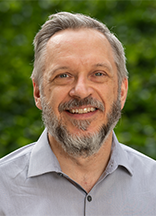Administrative Contact
Carrie Callahan, [email protected]
Areas of Interest
1) Mechanistic studies of DNA double-strand break repair. DNA double-strand breaks (DSBs) occur frequently and can be lethal if not repaired. Inappropriate repair can lead to chromosomal rearrangements. Understanding the dynamics of these events requires a detailed understanding of the molecular mechanisms of two competing DSB repair pathways, nonhomologous end-joining (NHEJ) and homologous recombination (HR). We use genetic approaches, mainly in yeast, to identify novel components of these pathways and characterize their modes of action. Current focuses are on DNA ligase IV, the lynchpin enzyme of NHEJ, resection of DSB ends in preparation for HR, and nuclear influences on translocation frequency.
2) Impacts of DNA repair and transcription on chromosome fragile sites. The global effect of deficient DSB repair on genome stability has historically been difficult to assess, but high-throughput genome analysis tools, including microarrays and next-generation sequencing, now allow us to look in an unbiased manner at the relationships between DNA damage, repair, and chromosomal aberrations. We are working with Tom Glover to describe the mechanisms by which transcription and replication interact throughout the cell cycle to promote genome structural alteration at mammalian “fragile sites” that act as hotspots for copy number variant (CNV) formation.
3) Dynamic process of global gene expression. We are active partners with Mats Ljungman in applying novel nascent RNA sequencing methods, especially Bru-seq, which allow us to examine the dynamic process of transcription and also the downstream stability of RNA transcripts. Major goals relate to understanding the factors that influence RNA polymerase transcription initiation and timely traversal through genes, and how these processes are both altered by, and contribute to, genomic DNA damage and mutagenic events. With large data sets in hand and growing constantly, next steps require increasing complex data analysis.
4) Genomic technologies and bioinformatics. I am Faculty Director of the University of Michigan Advanced Genomics Core. Through that role and diverse research efforts above, we are working to develop and advance novel genomic approaches at Michigan. Some examples include optical mapping, nanopore sequencing, duplex sequencing, spatial transcriptomic analysis, and others. A recent past success was the application of Pacific Biosciences technology in studies that revealed an association of L1 retrotransposition with replication, in collaboration with John Moran.
Honors & Awards
- President, Environmental Mutagenesis and Genomics Society
- Endowment for the Basic Sciences Faculty Teaching Award in Human Genetics
- Environmental Mutagenesis and Genomics Society (EMGS) Service Award
- Pew Scholars Program in the Bio-medical Sciences
- Biological Sciences Scholars Program, University of Michigan
Credentials
- B.S., Biochemistry, University of Wisconsin, 1983-1987
- Ph.D., Neural Sciences, Washington University School of Medicine, 1987-1994
- M.D., Washington University School of Medicine, 1987-1994
- Residency, Laboratory Medicine, Washington University School of Medicin, 1994-1999
- Postdoctoral Fellow, Laboratory of Dr. Michael Lieber, Washington University School of Medicine, 1995-1999
- Chief Resident, Laboratory Medicine, Washington University School of Medicine, 1998-1999
Published Articles or Reviews
Bedi K, Paulsen MT, Wilson TE, Ljungman M. Characterization of novel primary miRNA transcription units in human cells using Bru-seq nascent RNA sequencing. NAR Genom Bioinform. 2020 2:lqz014. PubMed PMID: 31709421; PubMed Central PMCID: PMC6824518.
Wilson TE, Sunder S. Double-strand breaks in motion: implications for chromosomal rearrangement. Curr Genet. 2019. PubMed PMID: 31321486.
Sunder S, Wilson TE. Frequency of DNA end joining in trans is not determined by the predamage spatial proximity of double-strand breaks in yeast. Proc Natl Acad Sci U S A. 2019;116:9481-9490. PubMed PMID: 31019070; PubMed Central PMCID: PMC6510992.
Flasch DA, Macia Á, Sánchez L, Ljungman M, Heras SR, García-Pérez JL, Wilson TE, Moran JV. Genome-wide de novo L1 Retrotransposition Connects Endonuclease Activity with Replication. Cell. 2019 177(4):837-851.e28. PubMed PMID: 30955886; PubMed Central PMCID: PMC6558663.
Moorthy BT, Sharma A, Boettner DR, Wilson TE, Lemmon SK. Identification of Suppressor of Clathrin Deficiency-1 (SCD1) and Its Connection to Clathrin-Mediated Endocytosis in Saccharomyces cerevisiae. G3 (Bethesda). 2019 9:867-877. PubMed PMID: 30679249; PubMed Central PMCID: PMC6404604.
Arlt MF, Rajendran S, Holmes SN, Wang K, Bergin IL, Ahmed S, Wilson TE, Glover TW. Effects of hydroxyurea on CNV induction in the mouse germline. Environ Mol Mutagen. 2018 59:698-714. PubMed PMID: 30218578.
Glover TW, Wilson TE, Arlt MF. Fragile sites in cancer: more than meets the eye. Nat Rev Cancer. 2017 17:489-501. PubMed PMID: 28740117; PubMed Central PMCID: PMC5546318.

